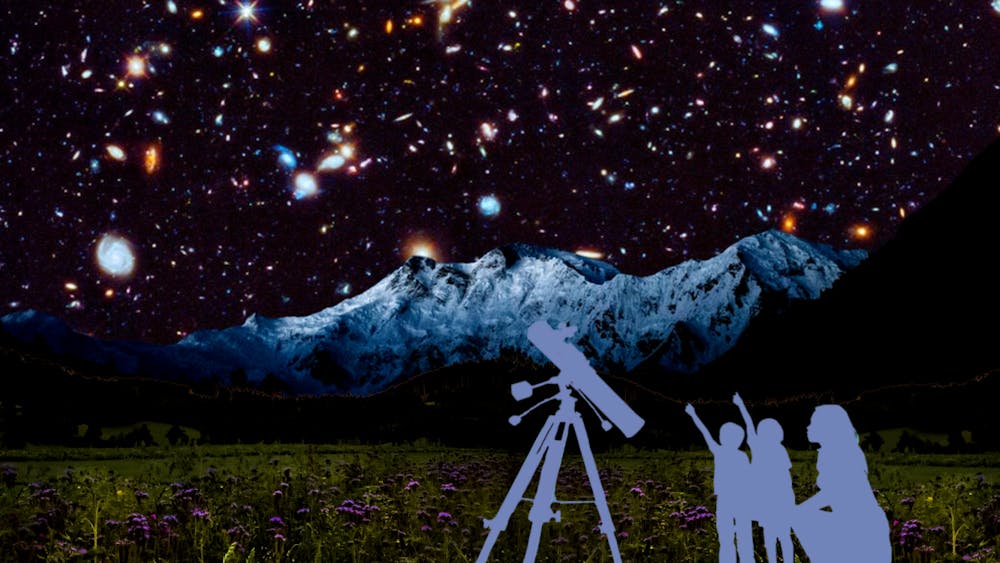On July 12, 2022, NASA released the first James Webb Space Telescope images to the public. The telescope has been in the works since the late '90s, and after being launched in December of 2021, it’s now operational and sending data back to Earth.
Seeing these images reminded me of my budding love for science as a child. Now, I hope that future generations of children will recognize the beauty and mystery these images hold.
The first time I was introduced to space was at the Discovery Museum. I rolled a ball down a funnel, watching it spin in circles before disappearing into the funnel’s center. Back then I didn’t understand that the game was referencing Einstein’s theories of gravity. As I grew up, I found myself attracted to similar astronomy exhibits: little video games simulating moonwalks, planetarium shows illuminating constellations, and simple iPod apps showing the starry sky hidden behind layers of light pollution. These miraculous scientific displays piqued my curiosity further, eventually leading to me pursuing astronomy in college.
While the arts and the sciences are considered to be separate disciplines, they truly are interconnected. The James Webb Space Telescope (JWST) is a prime example that the sciences often require artistry to fully capture the breadth of what is being studied.
But why should NASA bother making the images look beautiful? For one, it makes it easier to decipher the images and even scientists find color pictures to be easier to work with than black and white. In addition, incorporating art makes the images and the information more accessible to the general populace who may have trouble understanding why any of this should matter.
Engaging the broader public with these new images and findings has the potential to engage people with science and exploration through exciting new avenues. If I hadn’t gone to the Discovery Museum and hadn’t seen beautiful artwork of nebulae and galaxy clusters through my iPod, I’m not sure if I would have pursued the same career path. If instead, somebody had handed me a jumble of math and physics equations, I probably would have run the other way.
These images do not only reveal new depths of our universe—they are also incomparably sharper and more beautiful than images from past telescopes. The JWST captured astronomical objects like the Carina Nebula, Stephan’s Quintet, the Southern Ring Nebula, and galaxy cluster SMACS 0723 in a shocking amount of detail.
On top of that, they were able to capture an in–depth atmosphere analysis for WASP–96 B, a planet that exists outside of our solar system, showing evidence of clouds and haze made from water on the planet. Data such as water presence on planets outside of our solar system can have exciting implications for space research, exemplifying the multifaceted impact of these images.
For civilians, these photos are both works of art and miraculous feats of science. For scientists, this progress is a promising indication of what is to come on the new frontier of data collection and space exploration.
Even though most of the work to retrieve the images was done by the telescope itself, there is a lot of artistic skill necessary to finalize them for public viewing. NASA explained that the initial output of the images is more grayscale. After receiving the initial images, scientists assign different colors to the different wavelengths of light that the JWST captured to finally create the images that we see in NASA’s photos. The precision and detail necessary to polish the final image require a keen eye and mimic the attention to detail that fine art requires.
Personally, being able to experience astronomy through accessible routes like exploratory science exhibits inspired me to pursue the subject. I can only imagine how the JWST images may similarly act as a catalyst for others. Whether they’re a kid just figuring out what interests them in the world or a freshman in college uncertain about their career path, the sciences and the arts are two sides of the same coin of creativity at the end of the day.







